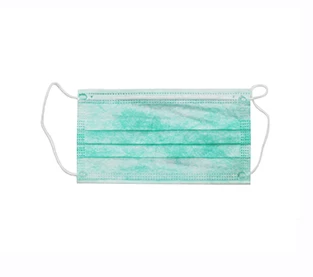Product: ES Material Fiber Nonwoven Fabric For Packaging
Raw Material: PP+PE
Nonwoven Technology: thermal bonded
Dotted Design: dot or plain
Gram: 25 gsm - 30 gsm
Color: White
Specification: custom
Sample: Can be provided without charge, freight to be collect
Applications:
Medical(20-60gsm): face masks,diapers,bed sheets,curtains,pillow covers,sanitary,etc
Packaging(25-30gsm): tea bag, coffee bag/filter paper, dust-proof covers.etc
Product: ES Thermal Bonded Non Woven Fabric For Tea Bag
Raw Material: PP+PE
Nonwoven Technology: thermal bonded
Dotted Design: dot or plain
Gram: 25 gsm - 30 gsm
Color: White
Specification: custom
Sample: Can be provided without charge, freight to be collect
Applications:
Medical(20-60gsm): face masks,diapers,bed sheets,curtains,pillow covers,sanitary,etc
Packaging(25-30gsm): tea bag, coffee bag/filter paper, dust-proof covers.etc
Product: Composite Non Woven Paper Desiccant Packaging Material
MOQ: 1000 kg
Material: Composite Non Woven Paper
Specification: Custom sizes.
Design: Welcome custom logo and design. Welcome OEM.
Color: Full Color of CMYK,Pantone Color as customer requirements
Weight: Based on size & material,thickness
Delivery Time: 10-15 days after confirmed the final artwork and order
Product: Desiccant Wrapping Paper
MOQ: 1000 kg
Material: DuPont Material
Specification: Custom sizes.
Design: Welcome custom logo and design. Welcome OEM.
Color: Full Color of CMYK,Pantone Color as customer requirements
Weight: Based on size & material,thickness
Delivery Time: 10-15 days after confirmed the final artwork and order
Product: Bi-component Non Woven Fabric Desiccant Packaging Material
MOQ: 1000 kg
Material: Bi-component Non Woven Fabric
Specification: Custom sizes.
Design: Welcome custom logo and design. Welcome OEM.
Color: Full Color of CMYK,Pantone Color as customer requirements
Weight: Based on size & material,thickness
Delivery Time: 10-15 days after confirmed the final artwork and order
Product: Spunbond Non Woven Fabric Custom Desiccant Packaging Material
MOQ: 1000 kg
Material: Spunbond Non Woven Fabric
Specification: Custom sizes.
Design: Welcome custom logo and design. Welcome OEM.
Color: Full Color of CMYK,Pantone Color as customer requirements
Weight: Based on size & material,thickness
Delivery Time: 10-15 days after confirmed the final artwork and order
Because according to the national production regulations, medical masks contain at least 3 layers of non-woven fabrics (N95 grade masks, structurally optimized: (middle layer) core filter layers are more and thicker)
S layer: polypropylene resin
M layer: polypropylene resin with high melt index


Meltblown cloth(PP Meltblown Fabrıcs Wholesale), commonly known as the "heart" of the mask, is the filter layer in the middle of the mask, which can filter bacteria and prevent the spread of germs. Meltblown cloth is a film made of polypropylene with high melt index. It is a film composed of many crisscross fibers stacked in random directions. The fiber diameter ranges from 0.5 to 10 microns. one.
So, how does melt-blown cloth filter viruses in the environment? Although the size of the new coronavirus is very small, about 100 nanometers (0.1 micrometers), the virus cannot exist independently. The main transmission routes are secretions and droplets when sneezing. The size of the droplets is about 5 micrometers. One, second, the meltblown cloth is essentially a fiber filter. When the droplets containing the virus are close to the meltblown cloth, they will also be electrostatically adsorbed on the surface and cannot penetrate.
Although the raw materials of the S layer and M layer of the mask are polypropylene-specific resins, the special materials for melt-blown fabrics and other non-woven fabric materials differ greatly in production process and performance. The special material for meltblown cloth is polypropylene with high melt index. The higher the melt index of polypropylene, the finer the melt-blown fibers, and the better the filterability of the melt-blown cloth.
It is reported that through process optimization, Shanghai Petrochemical is expected to increase production by about 2 tons per day in the short term, reaching a daily production of 8 tons of special materials for meltblown cloth. It should be known that domestic melt-blown non-woven fabrics(Non Woven Meltblown Fabric Manufacturer) were relatively niche, with an annual production capacity of 53,500 tons, accounting for 1% of non-woven fabric production capacity. They are mainly used to produce masks, environmentally friendly materials, clothing, battery separators and other products.
It is said that the melting index of Shanghai Petrochemical's previous products is only one-thirtieth of the special materials for mask melt-blown cloth(Polypropylene Meltblown Fabrıcs Supplier). Faced with the challenges of insufficient hardware such as slow pelletizing speed of the extruder, short cooling distance, and insufficient screw length, the company tried to find ways to make use of the existing equipment by modifying the electronic control system and transmission system, calling other production line sinks, and optimizing the die head. Carry out emergency transformation and adjustment to meet production needs.
Comparing the cross-sectional views of N95 masks and medical surgical masks, the scanning electron microscope pictures can clearly see that the thickness of the meltblown cloth of the surgical mask is 156 microns, and the thickness of the meltblown cloth layer of the N95 grade mask is 521 microns, which is 3 Times.